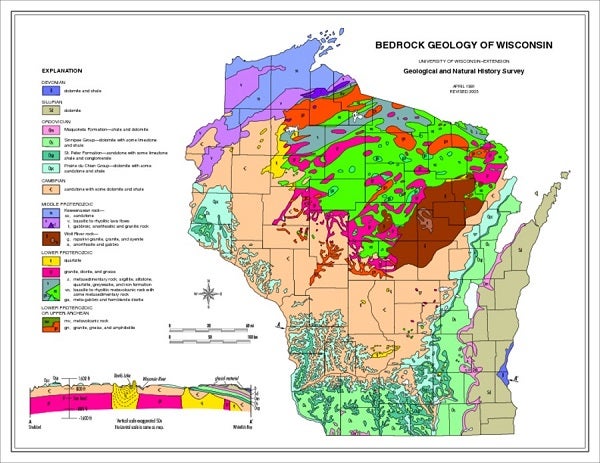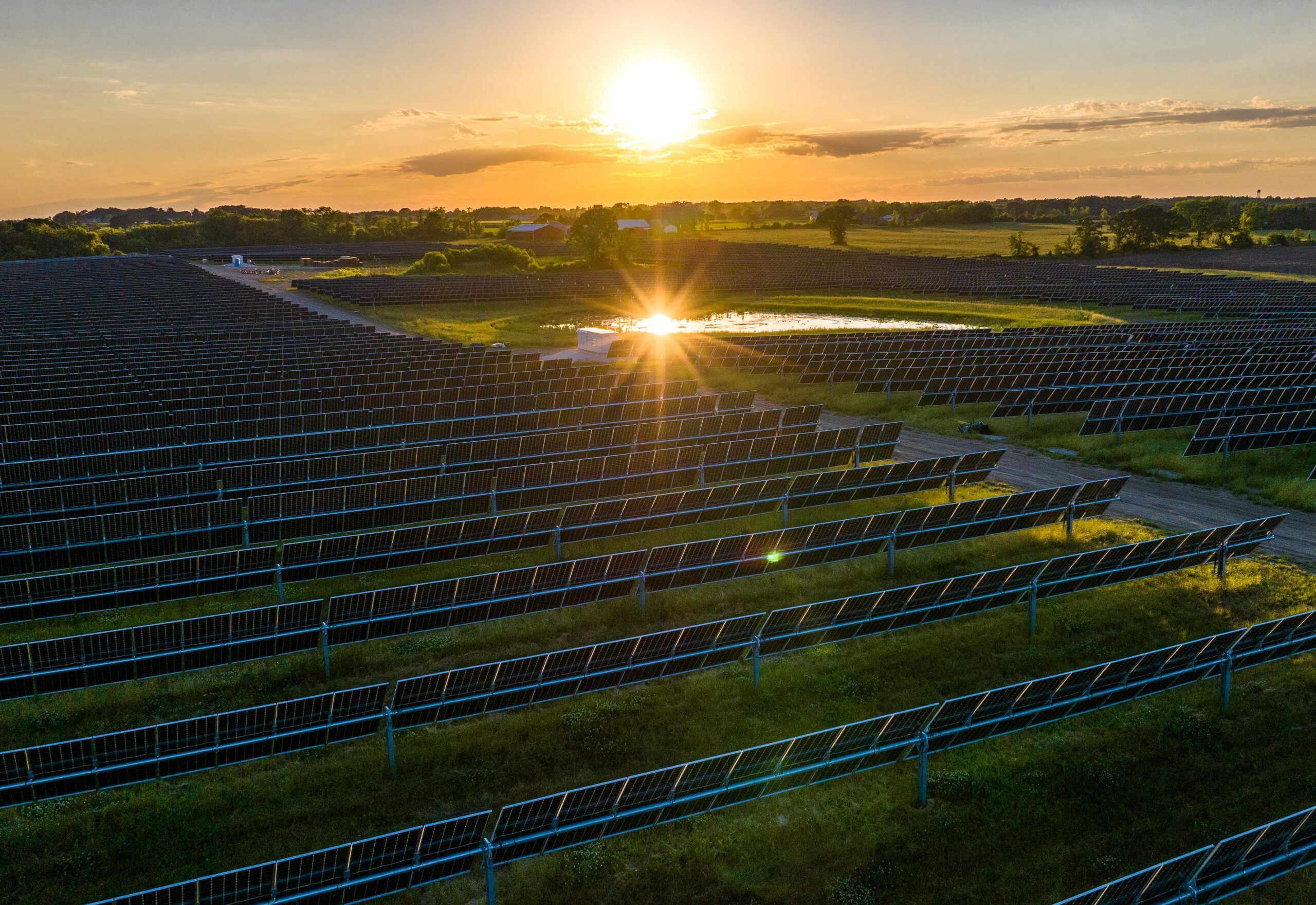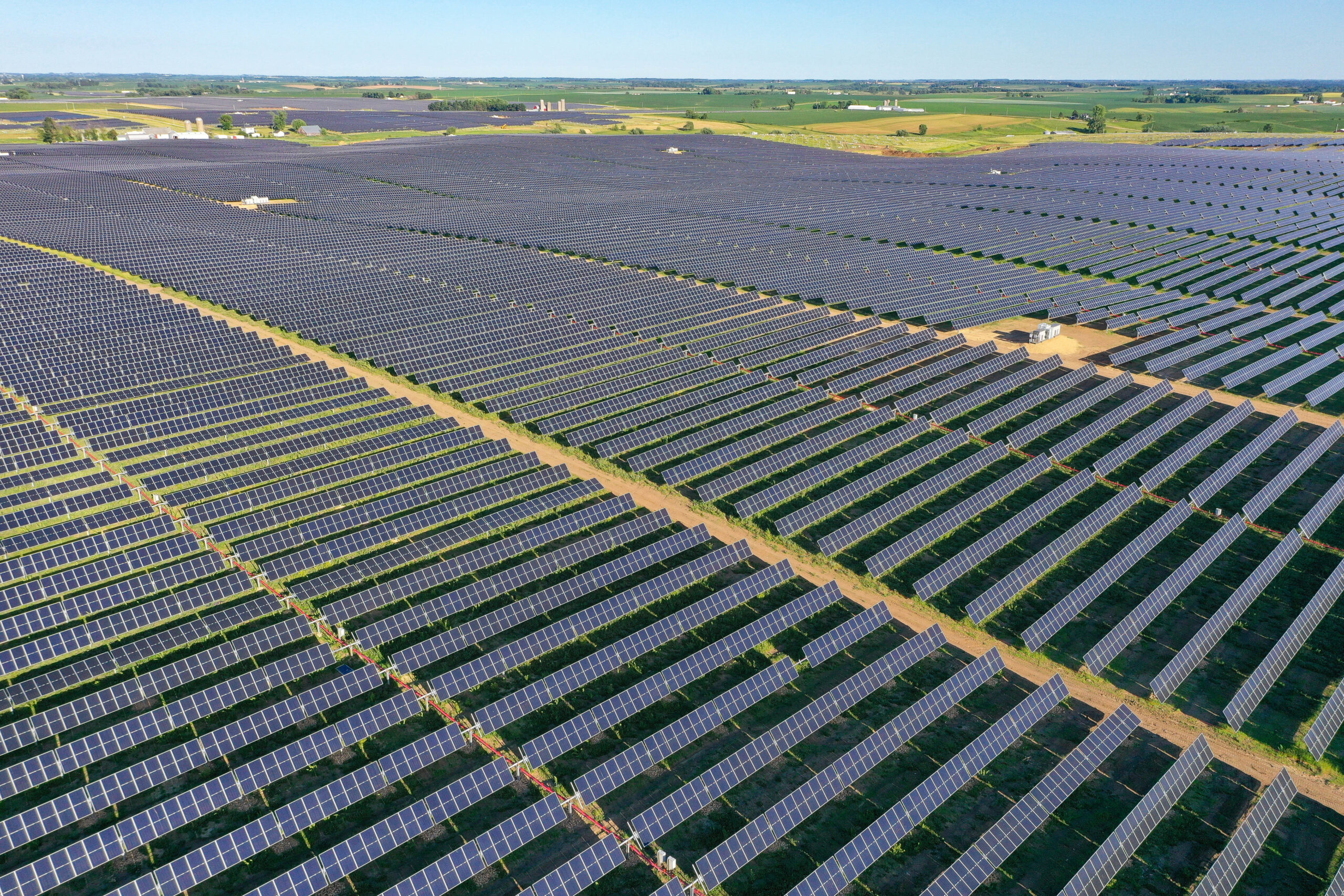Learn about the three distinct regions of Wisconsin geology with this helpful guide.
Region 1: Precambrian ‘core’ (northern WI)
Bedrock: Complex rock record of tectonic and volcanic activity from 2.8 to 1 billion yrs ago
Stay informed on the latest news
Sign up for WPR’s email newsletter.
• Oldest rocks: 2.8 billion year old gneisses –part of ancient North American continent
Central Bayfield and southern Ashland Counties; Along Black River, and Wisconsin River
west of Whiting
• “Penokean” mountains (1.85 billion yrs old): Banded iron formation, slate, schist,
quartzite – a now-eroded range once comparable to the Appalachians in height
Mt Whittlesey, Mellen; Flambeau Flowage area
• Wisconsin Magmatic Terranes (1.9-1.8 billion yrs old): Volcanic and intrusive igneous
rocks – rhyolite, andesite, granite, diorite—formed in a subduction zone setting like the
Cascades today.
Marinette County Parks; Menominee River State Recreational Area; Jim Falls County Park,
(Eau Claire County); Eau Claire Dells County Park (Marathon County)
• Wolf River Batholith (1.5 billion years old): Volcanic and intrusive igneous rocks –
rhyolite, granite, syenite – formed in a hot spot setting like Yellowstone today
Rib Mountain State Park, Wausau; Waupaca City Parks (old quarries); Hayman Falls
County Park, (Shawano County)
• Mid-Continent Rift (1 billion years ago): Lots of basalt and some rhyolite extruded in a
setting comparable to the East African Rift today. When volcanism ceased, the rift
valley filled with sandy sediment that now forms the Apostle Islands
Copper Falls State Park; Pattison State Park; Amnicon Falls State Park; Big Bay State Park;
Interstate State Park; St Peter’s Dome on the North Country Scenic Trail
Topography reflects glacial scouring of hard rocks
‘Whalebacks’ or roche moutinée; striated and polished rock surfaces
Hint for finding bedrock outcrops: Much of northern Wisconsin is covered by dense forest
and wetlands, and it can be hard to find exposed bedrock. The best outcrops are often
found along streams, especially at waterfalls.
Region 2: Glaciated southeast
Bedrock: Mostly Paleozoic sedimentary rocks laid down in shallow seas
Ages: Late Cambrian through early Devonian (520-390 million years)
Ordovician and Silurian rocks are commonly fossiliferous
Parfrey’s Glen Natural Area; Mosquito Hill Nature Center, New London; Fonferek Glen
Park, (Brown County); Cato Falls County Park (Manitowoc County)
Exception: A few ‘windows’ into Precambrian ‘basement’ rock, such as at Red
Granite (1.75 billion year old igneous rock) and the Baraboo Hills (1.6 billion
year old folded quartzite – a single exposure of a buried mountain range)
Devils Lake State Park; Observatory Hill State Natural Area; Red Granite City Park
Topography generally subdued, reflecting glaciation; along Lake Michigan, ice age dunes
Terminal moraine of the Green Bay ice lobe creates a continental divide
between rivers that flow into Lake Michigan vs. those that flow into the
Mississippi system
Kettle Moraine State Park; Hartmann Creek State Park; Whitefish Dunes State Park,
Kohler-Andrae State Park
Exception: The Niagaran escarpment, the boundary between soft Ordovician
shale and overlying resistant Silurian dolostone
High Cliff State Park; Peninsula State Park; Calumet County Park (Hilbert)
Region 3: The Driftless Area – the unglaciated southwest
Bedrock: Paleozoic sedimentary rocks laid down in shallow seas
Ages: Late Cambrian through late Ordovician (520-440 million years)
Ordovician rocks are especially fossiliferous
Limestones and dolostones host lead-zinc deposits
Caves and other ‘karst’ features in limestones
Governor Dodge State Park; Cave of the Mounds; Crystal Cave (Spring Valley);
Elroy-Sparta Bike Trail
Pb-Zn related museums: Badger Mine Museum, Shullsburg; Rollo Jamison
Museum, Platteville
Topography shaped by rivers (a ‘fossil’ pre-glacial landscape)
Deep valleys, steep bluffs, ‘castellated mounds’
Wyalusing State Park; Natural Bridge State Park; Nelson Dewey State Park;;
Wildcat Mountain State Park
Wisconsin Public Radio, © Copyright 2025, Board of Regents of the University of Wisconsin System and Wisconsin Educational Communications Board.





